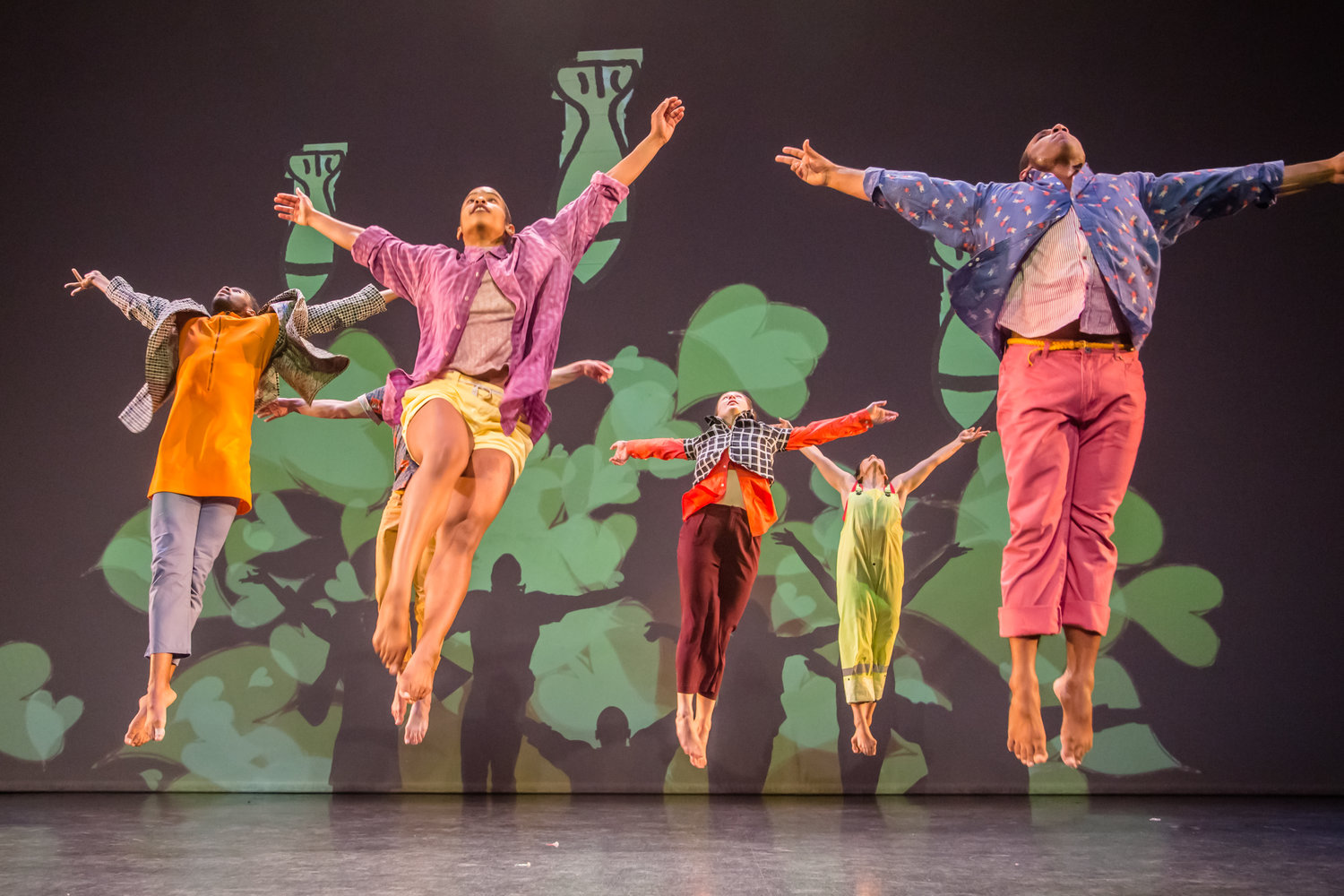“Today, love is dividing…all around and just out of reach.”
Tumultuous emotion spilled out of every dancer’s fluid and graceful movement last Saturday night under the intense orange glow of strategically-placed lighting. David Dorfman’s Aroundtown premiered at Connecticut College in Palmer Hall last week, taking form as an Onstage performance put on by the College. The performance was both deeply emotional and uniquely personal, as almost every individual dancer performed an original monologue or solo that was woven effectively and purposefully into the show.
The setting of the show is meant to be a public space, and a goal of the work, as explained by Liz Delize ’13, is that “hopefully it gets [us] thinking about how we relate to one another every day.” These people are coming together by bumping into one another while grappling with love, misogyny, hate, nostalgia, and fear. The dancers often moved as a group throughout the show and their interactions were all about “non-sexualized intimacy” and closeness as Dorfman described it. One of the dancers described how they wanted to convey support, solidarity and relationships. They expressed this by physically lifting and balancing one another, a frequent occurrence in the show’s movements.
The aesthetics and style of the show effectively supported the message, and they did so without distracting from the physical, lyrical, and musical talents of the performers. Most performers wore loose fitting, simple, elegant garments in soft orange, brown and black. They were shades and styles that played off of a sometimes harsh and unforgiving stage light array that illuminated their movements. It was an effective dichotomy that I interpreted as being representative of love and care between members of a community facing up to harsh and ugly realities that they face everyday including hate, division, loss, and issues of discrimination.
The music periodically shifted from harsh and cacophonous to melodic and soothing. The movements and monologues of the dancers reflected the music, in that the more poignant, personal, and upsetting or angry stories were buttressed by clashing cymbals, uneven and unexpected dramatic sounds. One that stuck out in particular to me was a deeply personal and emotional performance by Simon Thomas-Train. The piece started out with Thomas-Train being carried around the stage horizontally, supported by the hands and arms of his fellow dancers. The image superimposed on the wall behind him was an idyllic, roughshod drawing of a church in front of mountains. Thomas-Train launched into a beautifully worded story of playing outside the church with his younger brother, invoking a deep sense of nostalgia, happiness, and longing. He described in detail the enjoyment and love that he found in this place and what it meant to him personally. Slow, soft, music touched off of each of his words. His fellow dancers brought him around the room at his direction, and at times lifted him high into the air which were often correlated with moments of euphoria for Thomas-Train, ostensibly grasping at the best and brightest of those memories. However, as the seen progressed, emotions of confusion, anxiety, and ambivalence came through in his words. He started to repeat the phrase, “I wanna be around but only if you’re around.” As he repeated the phrase it took on a more stressful tone and he started to resist when the performers whisked him around the stage. The memories seemed to be turning on our storyteller, as he realized that this place meant so much to him and was so special because of the people with whom he had shared it. It seemed as though the thought of returning or even imagining the place without this person was too much for him to bear. To me, it spoke of the complexity and importance of close relationships between individuals and how for better or for worse they often define our relationship with a place. It can be unsettling to reflect on the tragically fleeting nature of these experiences that only live on as memories. That being said, Simon Thomas-Train also performed more than one light hearted, amusing piece that centered around a joke, one involving whale sounds (which one audience member noted was particularly well-executed).
Other particularly captivating performances included those of Jasmine Hearn and Kendra Portier. Hearn’s was an account of being catcalled while walking down the street, its affects on her, and the various different responses that one can have to this situation. These turned into a cadence, as each member of the company, at the direction of Hearn, “got low, got around, smiled, hid and fought.” This portion of the show involving the other dancers followed a powerful and commanding soliloquy by Hearn in which she described her different responses to being catcalled and displayed a range of emotions from dismissive ambivalence to outright anger and forthright defiance.
In sum, the piece was an undeniably exquisite physical and verbal expression of the complexities of love’s manifestation in relationships between people and the environment in which they live. As the piece is described on Dorfman’s website, “Aroundtown is a kinetic poem that examines the varied, unique, and sometimes divided notions of LOVE—its meaning, purpose and platform.” It’s safe to say that Aroundtown delivered this and so much more.









